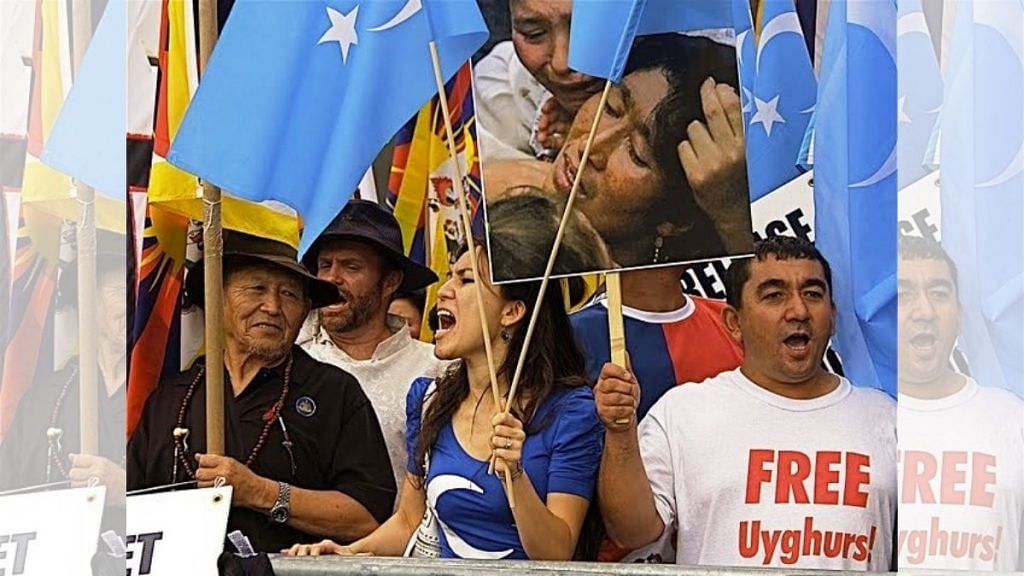New Delhi: China held its first diplomatic talks with the Taliban Wednesday, establishing “effective communication” with the insurgent group in Afghanistan. However, the growing relationship between the two countries seems to be contingent on Taliban’s ties with the East Turkestan Islamic Movement (ETIM), an Uyghur militant group.
In an earlier meeting with Taliban representatives on 28 July, Chinese Foreign Minister Wang Yi had asked the former to crack down on the ETIM, which is based out of the Xinjiang province.
In response, the Taliban spokesperson Abdul Ghani Baradar reportedly said, “The Afghan Taliban will never allow any force to use the Afghan territory to engage in acts detrimental to China.” ETIM, allegedly, moves fighters from Afghanistan to China and is active in the former country.
Later, on 17 August, in an emergency meeting of the United Nations Security Council (UNSC) on the situation in Afghanistan, China had warned against the country becoming a “haven” for terrorists in a purported reference to the ETIM.
ThePrint takes a look at the ETIM, its origins and the Taliban’s connection to the militant group.
Also read: Who are Hazaras, the Afghan minority group hated & tortured by Taliban
Origins of ETIM
An extremist group of native Uyghurs, a Muslim minority in China, the ETIM’s stated objective is to form a sovereign nation of East Turkestan, carved out from the Xinjiang province, according to audio conversations obtained by the NEFA (Nine Eleven Finding Answers) Foundation, a now-defunct NGO that researched terrorist groups, in 2008.
A 2010 book — titled ‘Ethnic Identity and National Conflict in China’ by Wang Pengxin, Arabinda Acharya and Rohan Gunaratna — noted that the ETIM was founded by three individuals, Abdul Hakeem Makhdoom, Abdul Azeez Makhdoom and Abdul Hameed in 1940 and the initial avatar of the group engaged in local uprisings in Xinjiang.
Almost 40 years after its founding, around the 1980s, the group’s co-founder Abdul Hakeem took radicalisation to the next level and began teaching fundamentalist interpretations of Islam to Uyghur students, the paper added.
While the group identified itself as the ‘East Turkestan Islamic Movement’ only in 1997 under Hakeem’s leadership, China held the ETIM responsible for over 200 terrorist attacks in Xinjiang between 1990 and 2001, which have killed 162 people.
“Like most terrorist groups in the world, the “East Turkistan” terrorists are keen on directing explosions at innocent people, in order to create an atmosphere of terror and to extend their influence,” said China’s Information Office of State Council. In 2002, the council also provided a detailed list of the attacks committed.
Links to 9/11 attacks
In 2002, the United Nations and the US also officially designated the ETIM as a terrorist group, citing China’s figures as well as the 9/11 attacks. This is because the ETIM was also affiliated to the al Qaeda, the group which had carried out the terror attacks on 11 September 2001 in the US.
“ETIM has a close financial relationship with al-Qaida and many of its members’ received terrorist training in Afghanistan, financed by al-Qaida and the Taliban. A number of ETIM and ETIM-linked militants were captured in Afghanistan last fall fighting alongside al-Qaida and the Taliban,” read a statement from the US Treasury Department in 2002.
“A July 2002 report from the Hong Kong press quoted captured militants as saying ETIM leaders still worked with Usama bin Laden,” the statement added.
However, by 2020, the US controversially removed the group from its terror list, stating that “there has been no credible evidence” of the group’s continued existence for over a decade.
The US’ move was criticised by China but celebrated by members of the Uyghur diaspora.
Also read: India backed the wrong horse in Afghanistan, and has gone into a strategic sulk now
al Qaeda links and involvement in Afghanistan
As evident in the US treasury department’s statement, the ETIM has long been suspected of maintaining links with al Qaeda, even though then ETIM leader Hasan Mahsum went on record to deny any links in 2002.
Despite this, the Uyghur extremist organisation has continued to be named in association with other prominent terrorist groups operating in countries bordering Xinjiang province.
For instance, a UNSC report on the situation in Afghanistan from May this year said that the ETIM “facilitates the movement of fighters from Afghanistan to China”.
“According to several [UNSC] Member States, the group remains active in Afghanistan. The group participated in the siege of Kuran wa Munjan district in Badakhshan Province in July 2020, according to one Member State, engaging in armed conflict with Afghan security forces,” the report added.
With the Taliban’s return to power and China’s efforts to establish a diplomatic relationship with them, the issue of the Taliban’s links to ETIM has come to the fore once again.
However, according to a report in the Asia Times as well as reporting by the South China Morning Post, the Taliban leadership’s promise to China to tackle the ETIM is not necessarily in line with the views of several ground commanders of the insurgent group in Afghanistan.
With inputs from Amogh Rohmetra
Also read: How Taliban’s takeover of Afghanistan puts China in $282 billion creditor trap
